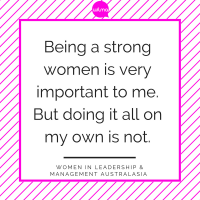If one definition of sexism is exclusion of women, then newsrooms and most of the media products they put out are sexist. Business newsrooms are among the worst. Sit down on any one day and count up the stories by men, about men, featuring pictures of men, quoting men as experts, featuring a bank of men in advertisements and on panels. Actually, save yourself some time and just count the women. In fact a perpetual headache for photographers from mainstream media is coming up with creative ways to snap men in suits.
A report The Status of Women in the US Media 2013 highlights what I suspect is typical the world over.
While there was gender parity in news consumption the vast majority of by-lines in both digital and print versions of newspapers were men. Men were quoted far more than women and especially in print and are more likely to be quoted as experts. And even in death men dominate – women were far less likely to be featured in obituaries of notable people. Men even dominate discussions of particular interest to women: in discussions on abortion one report showed 72.5% of commentators were men.
The result of all this maleness, particularly in our business newsrooms? Well there’s the obvious: we hear male views, listen to male stories told from male points of view, see males as experts and captains of industry and it reinforces the view that the big end of town is run by men and for men.
It also makes women feel actively excluded which is bad business for mainstream media that could do with the subscription revenue.
So one would expect women are lining up in droves to be interviewed, to ensure we had diversity in the business press and to role model to other women that they too can be successful, powerful and influential. And there are an emerging group of enlightened blokes in newsrooms trying to do the right thing and find women to interview. But there’s the catch. Where the heck are the women?
For more than 25 years in journalism mostly as an editor or publisher and as a passionate supporter of professional women, I have tried valiantly to get women into the business press, getting them to open up and then dealing with the after affects.
And I am finally going to break my sisterhood silence and write about this, firstly because it is changing too slowly. Worse, as business becomes social, women’s bad habits are carrying over.
So excuse the gender stereotyping and with a nod to the exceptional women who break the mould, here goes:
One: You are in business to make money
Men are very comfortable talking about money, especially revenue, profits and how much they won at the races. Women? They literally squirm in their seats. This is a problem if you are a CEO of a small or large business. And for a business journalist it is very frustrating to be told half way through an interview not to talk about the financials.
Sometimes it gets worse. “We’re not in business to make money but to make a difference,” they earnestly explain. Ladies, you can make a much bigger difference if you make a lot of money and one doesn’t negate the other anyway. Case in point? Melinda Gates and Australia’s Therese Rein.
Two: Make yourself available
Women are often advised by well-meaning media advisers not to talk to the media. They provide the same advice to men. The men ignore them. Problem is the world is now social. Business is social. Women have to get used to being in a spotlight whether it is mainstream media, posting thought leadership articles on Linked In or building an influential audience through their Twitter stream.
But many women hate the spotlight. Many business event managers now work very hard to try and avoid yet another blokes fest line up. And some of Australia’s most senior business leaders including Qantas chief Alan Joyce, Telstra’s David Thodey and ANZ’s Mike Smith have signed a pledge to push for more women to speak at conference panels. Elizabeth Broderick, Australia’s Sex Discrimination Commissioner says she doesn’t agree it’s not possible to find women any more. And she’s right. It is now easy to find the women. But getting them to front up is another issue.
Were they told as girls that a good girl is a quiet girl? Maybe they are told not to boast as it isn’t ladylike and that a modest woman is more attractive than the ‘pushy woman’. Who knows. But the result is that many women will do anything to avoid an interview. Ring up a male CEO in Australia and ask for a one on one? You hear him tapping away to his PA to clear his diary before you finish the sentence. How long do you want? One hour? Two? Do you need a new photo?
Three: Set the agenda
Women need to provide more detail and information about their business, industry and the changing world. This may mean calling for change or digging the boot in. But women are very reluctant to speak critically in public. Often they shy away from providing information in case it is the least bit commercially sensitive. They prepare for an interview with the focus on how to avoid trouble instead of how to make the most of a great opportunity by preparing interesting and compelling content. This means that a common cry from journalists once they do secure an interview is: “Waste of time. She didn’t say anything.” It also means the stories don’t get a big run because women are reluctant to beat up a story or give an exclusive.
One senior woman told me it was because she feared saying the wrong thing getting kicked out of the boardroom. ”It feels like we just got here,” she said. David Gyngell, the CEO of Australia’s largest free to air television channel, is still fronting up to his boardroom after a physical altercation with one of Australia’s richest people. What’s to be afraid of?
Four: Be confident about being an expert
Many women have a little voice that tells them they are a fraud and one day will be found out so best to lie low. Others are reluctant to talk even if they have a PHD on the subject. The result of that is that men who might know almost nothing on the subject material are happy to give a quote whenever they come up on the desperately busy journalist’s roll a dial. So they get quoted all the time. It’s getting even more incestuous. Journalists are sourcing experts from social media. Social media quotes mainstream media. But in this new world, many of the old things still matter. As influential networks spread from mainstream media to social media, experts who can create compelling shareable content have the most cut through and develop the biggest profile. For a professional woman being social does not mean following Kim Kardashian, as I told a professional woman the other day. It means developing your fields of expertise and talking about it to influencers and stakeholders who can share your ideas to their networks. “I don’t have time,” she said. “Besides I don’t have anything to say.”
There is one big difference with social media – you don’t have to go through the male dominated newsrooms to build an external profile. Some smart women are participating and building their confidence and profile online. And others are brilliant at social such as columnists Laura Tingle and Annabel Crabb and it has led to an even bigger presence in mainstream media. But to make a critical difference we need a mass ‘lean in’ type movement by women at all levels of business to define their areas of expertise and build networks of influencers. That in itself will make it easier for the journalists to source new talent.
Five: Learn to play the media game
Backgrounding a journalist is not gossip. Providing context is not giving away confidential information. Speaking off the record is not being sneaky. It has always puzzled me how the men at the big end of town know how to play the game and the women have no idea. What do they do? Whisper to their unborn sons their secret tips?
I once explained to a prominent board director that on a recent deal, her chairman had backgrounded a journalist and a fellow director had provided a bit of gossip on the other side as an unnamed source. “I would never be that unprofessional,” she said. In fact the company received very good press due to the actions of those ‘unprofessional’ men. As men seem to understand, it is a critical part of an executive’s job to develop relationships with at least two of the leading journalists that cover your area.
Six: Understand the 70% rule
Try ringing up a woman after a story has appeared in the media. By then, she will already have talked to three girlfriends who all would have agreed that yes, the interview was awful, yes, the journalist should never have sought an opinion from anyone else, yes the journalist missed all her key messages, yes the questions were about her and not the company which would get her into trouble, yes she was going to ring up the journalist and tell them what she thought. Note to sisterhood: Stop doing this. Ask a man what he thinks of a story where he has featured? “Great,” he will say. “Seventy per cent came out just the way I wanted it to.” If there is a mistake in a story, ring up and get it fixed. Otherwise sit back and enjoy the compliments. It is not uncommon for a journalist to slam down a phone and tell the office at large: “Don’t ring her again. She’s a nutcase.” (We journalists are simple creatures.)
Seven: Love your photo
Yes ladies you know exactly what I am talking about. Specifically your hair. Your hair looks fine. It is expertly cut and coloured every month. To the untrained eye (your husband and everyone else) it looks exactly the same, day after day. All up, you look like an extremely professional and attractive woman who should grace the pages of the Financial Review on a regular basis and give the eyes a rest from white, middle aged men. So I beg you. Get a few photos you are happy with and send those to journalists. And if by good luck, a real photographer takes your photo, once it appears and you have to say something, try this: “Did you notice my photo? Didn’t my hair look great!
This article was originally published on Blue Notes 12th May 2014 Read the original article









Leave A Comment